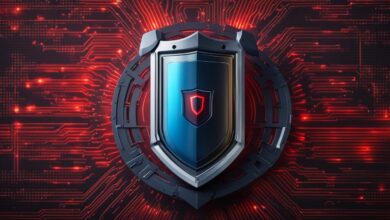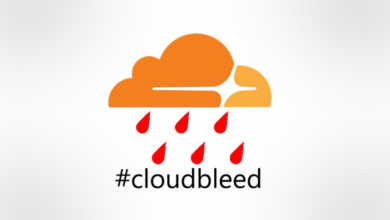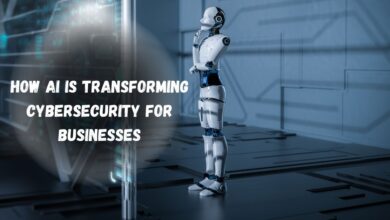NIST Cybersecurity Framework 2.0: Key Strategies for Effective Adoption

Cybersecurity threats cost organizations worldwide an estimated $8 trillion in 2023, and experts project this figure to reach $10.5 trillion by 2025. NIST Cybersecurity Framework 2.0 comes at a vital time and gives organizations a complete way to protect their digital assets and stay resilient against evolving threats.
NIST Cybersecurity Framework 2.0 builds on its predecessor’s soaring win with updates that tackle modern cybersecurity challenges. The latest version goes beyond traditional IT security to cover broader organizational risks, supply chain weak points, and governance needs. This framework helps you build a resilient security program that lines up with your business goals while meeting regulatory requirements.
This piece gets into everything in NIST CSF 2.0 implementation, from planning to deployment. Here’s what you’ll learn:
- Ways to check and boost your current security using the framework
- Steps to Build Your Implementation Plan
- The quickest way to blend the framework with your security programs
- Tools to measure your security program’s success
- Ways to stay compliant and adaptable long-term
Let’s look at how your organization can put this boosted cybersecurity framework to work.
Strategic Value of NIST CSF 2.0
NIST Cybersecurity Framework 2.0 marks a major step forward in cybersecurity governance. It gives your organization better ways to manage and reduce cybersecurity risks. Your company will gain strategic advantages that go way beyond simple security compliance when you implement this framework.
Business Impact Analysis
A solid grasp of your organization’s key objectives and dependencies forms the foundation of good cybersecurity management. This framework helps you perform detailed business impact analyzes that identify vital assets and operations needed for mission success. You’ll better understand what it means to lose operations partially or fully, which leads to smarter decisions about where to put resources and how to handle risks.
The new governance function lets you set and share risk management objectives that match what stakeholders expect. This match-up means your cybersecurity efforts directly support business goals while keeping appropriate protection levels across operations.
Risk Reduction Benefits
Your organization gets substantial benefits from the framework’s improved risk management approach:
- It combines cybersecurity risks with other business risks in enterprise risk management
- You get clear direction for risk responses, including guidance about cybersecurity insurance choices
- The framework helps develop supply chain risk management programs with clear milestones and communication protocols
Competitive Advantages
NIST CSF 2.0 adoption gives you clear advantages in today’s digital world. Small and medium-sized businesses see particular benefits since 43% of cyber attacks target organizations with fewer than 1,000 employees. Stakeholders and customers will notice your stronger cybersecurity position when you put this framework in place.
The framework’s flexibility lets you tackle specific risks while keeping operations running smoothly. Organizations with limited IT security resources will find NIST CSF 2.0 provides a strong cyber defense system that grows with them. This adaptability matters because 57% of small business owners incorrectly believe they won’t be targeted by cyberattacks.
Your supply chain relationships grow stronger with this framework as you learn to assess and rank suppliers by how critical they are. This organized approach to vendor management cuts down third-party risks and boosts your overall security position.
The governance elements help translate complex cybersecurity terms into business language that executives can grasp easily. Better communication about expectations, planning, and resources follows naturally. This improved dialog ensures your cybersecurity investments match your organization’s strategic goals and risk comfort levels.
Framework Architecture Deep Dive
You can build a reliable cybersecurity program by learning NIST CSF 2.0’s architecture. The framework takes an integrated approach to handling cybersecurity risks through connected components.
Core Structure Analysis
The CSF Core sits at the center of your implementation. It has six essential functions that work together to give you complete cybersecurity coverage. These functions are the foundations of your cybersecurity strategy:
- GOVERN: Sets up your risk management strategy and policies
- IDENTIFY: Helps you understand current cybersecurity risks
- PROTECT: Puts safeguards in place to secure assets
- DETECT: Helps you find security events
- RESPOND: Limits the effects of detected incidents
- RECOVER: Helps restore normal operations
Your organization needs to handle these functions together, not one after another. This way gives you complete coverage and keeps operations running smoothly.
Profile Development Methodology
You can create your organizational profile with a well-laid-out approach that matches your business goals. The framework has two distinct profile types. The Current Profile shows your existing cybersecurity status, and the Target Profile outlines where you want to be.
Here’s the quickest way to develop your profile:
- Set the scope based on your organization’s context
- Collect relevant information including policies and risk priorities
- Write down your current security status
- Look at gaps between current and target states
- Make and follow an action plan
Implementation Tier Guidance
Your experience through implementation tiers shows growing sophistication in cybersecurity risk management. The framework describes four tiers from Partial (Tier 1) to Adaptive (Tier 4). Each tier shows a different level of detail in your cybersecurity practices.
Moving to higher tiers makes sense only when you can reduce risks affordably. Your tier choice should add to your existing risk management methods, not replace them.
The framework’s flexibility lets you customize implementation for your organization’s specific needs. Small businesses and large enterprises can adapt the framework to match their risk tolerance and available resources.
Enterprise Risk Integration
A structured approach that matches NIST CSF 2.0’s improved governance model will help you integrate enterprise risk management with your cybersecurity program. Your organization can succeed when cybersecurity initiatives connect with broader business goals.
Alignment with Business Objectives
Your enterprise risk management (ERM) program should work at the highest organizational level and include mission, financial, and technical risks. The integration needs:
- Measurable Key Performance Indicators (KPIs) for identity security programs
- Clear documentation requirements for risk assessment
- Unified monitoring systems across organizational units
- Feedback mechanisms that drive continuous improvement
The framework helps integrate risk monitoring and evaluation in organizations of all sizes and programs. This integrated approach will give your cybersecurity efforts a direct path to business success while keeping security controls intact.
Risk Appetite Considerations
Your organization’s risk appetite forms the foundations of an effective cybersecurity strategy. Senior leaders and managers must watch and discuss risk management strategies to set optimal risk levels for critical assets. These factors matter most:
- Define acceptable risk levels for critical assets
- Establish clear accountability measures
- Document risk tolerance statements
- Create metrics for measuring risk performance
- Match stakeholder expectations
The framework shows that cybersecurity represents a major source of enterprise risk that senior leaders should think over among other business risks. Risk appetite statements should guide operational decisions and resource allocation throughout the organization.
Decision-making Frameworks
Good decisions need governance systems that set clear risk priorities and strategic direction. The framework offers a structured approach through its Cybersecurity Risk Register (CSRR) to help you:
Record and share known system-level threats and vulnerabilities. This documentation helps track and manage potential risks better across your organization. Your decision-making process should follow four key operating principles:
- Risk Transparency
- Risk Communications
- Risk Ownership
- Risk Decision-Making
The framework’s governance component highlights cybersecurity as a major enterprise risk that needs senior leadership’s attention. A systematic approach to evaluating and responding to cybersecurity risks comes from implementing these decision-making frameworks while staying aligned with strategic objectives.
Note that the CSF needs clear governance structures to support decisions, gather organizational context, and establish oversight committees. This detailed approach keeps your cybersecurity program effective and ready for changing business needs.
Building a Compliance Program
A strong compliance program for NIST CSF 2.0 needs systematic documentation and well-laid-out processes. Your organization will succeed by setting clear policies and keeping detailed documentation that shows your security program works.
Policy Development Process
The policy development experience begins when you create detailed documentation that arranges your organization’s risk management strategy. You should establish clear management intent and expectations for cybersecurity risk management. Senior management approval is vital because it creates the foundation for your security program.
Your policies need regular reviews to stay effective. This keeps them current with changing threats, technologies, and organizational missions. Policy updates should reflect:
- Changes in legal and regulatory requirements
- Technological advancements (such as AI adoption)
- Business changes (acquisitions, new contracts)
- Evolving threat landscapes
Documentation Requirements
Documentation creates the backbone of your compliance program. Detailed documentation can save hundreds of hours and thousands of dollars in staff and consultant expenses. The program has these essential components:
- Risk management policies and procedures
- Incident response plans
- System security assessments
- Training records and acknowledgments
- Supply chain risk management procedures
- Business continuity plans
Audit Preparation Strategies
A methodical approach ensures proper review of all NIST CSF implementation aspects during audit preparation. The audit preparation needs these steps:
- Define clear audit scope and objectives
- Assemble a cross-functional audit team
- Gather relevant documentation and evidence
- Conduct preliminary assessments
- Document findings systematically
Regular monitoring and assessment help maintain compliance status. A continuous improvement strategy should include periodic reviews of cybersecurity risk management results. This approach keeps your policies and supporting processes at acceptable risk levels.
The audit documentation should show clear mapping to NIST CSF requirements. This mapping demonstrates exactly what you need to maintain security and compliance. Note that editable documentation helps your organization adapt to changing needs and technologies.
Being organized in policy development, documentation, and audit preparation creates a green compliance program that adapts to emerging threats while staying aligned with NIST CSF 2.0 requirements. Regular reviews and updates keep your program relevant to your organization’s evolving needs.
Technology Infrastructure Alignment
A strong technological foundation that lines up with your security goals is essential to successfully implement NIST CSF 2.0. Your organization’s security posture needs detailed visibility and control in hybrid environments.
Systems Assessment Methodology
A complete digital asset inventory should be your first step. The right implementation can boost asset coverage by 30% and improve how well you manage vulnerabilities. These foundations will get you started:
- Unified asset inventory with cyber risk context
- Continuous monitoring capabilities
- Up-to-the-minute vulnerability assessment
- End-of-life management tracking
- Bi-directional CMDB synchronization
Your assessment approach should help you manage assets proactively up to twelve months ahead to prevent unpatchable vulnerabilities. This forward-thinking strategy will give a consistent match with changing security needs.
Tool Integration Approaches
A unified platform can speed up your cloud infrastructure and SaaS application protection by 85%. Your integration strategy should center on bringing security management into one dashboard that shows everything happening across your technology stack.
Success in integration comes from picking solutions that naturally work with what you already have. Modern security platforms can spot threats with 99% accuracy using AI-powered deep learning. This precision means your security tools protect your organization better together.
Architecture Adaptation
Your architecture needs to grow with the framework’s requirements while staying quick and efficient. Build multiple layers of defense to protect your endpoints – laptops, desktops, and servers. This setup should include:
Real-time Monitoring: Scan and assess your infrastructure constantly to catch vulnerabilities and configuration changes right away. Your monitoring should give you a complete view of all platforms and environments.
Automated Response: Set up systems that match remediation tickets with 96% accuracy. This automation makes your incident response smoother and requires less manual work.
Flexible Solutions: Use cloud-based applications that watch critical files, directories, and registry paths as they change. These solutions should grow with your infrastructure while keeping security controls consistent.
When you line up your technology infrastructure with NIST CSF 2.0 requirements, you build a foundation for lasting security operations that grow with your organization. Note that good implementation needs ongoing assessment and adaptation of your technical capabilities to handle new threats.
Workforce Development Strategies
A skilled cybersecurity workforce plays a vital role in successfully implementing your NIST CSF 2.0 program. Your organization’s security depends on competent teams and a security-conscious culture.
Training Program Development
Your training program should work alongside the National Initiative for Cybersecurity Education (NICE) framework. This framework serves as a key reference point that helps describe and share cybersecurity work information. Here’s what your program needs:
- Original security awareness training
- Role-specific technical training
- Continuous learning opportunities
- Certification preparation support
Make cybersecurity knowledge a key factor when you hire, train, and retain employees. Your training initiatives should target measurable objectives that show improved security awareness and competency throughout your organization.
Role-specific Competencies
Set clear cybersecurity duties for different organizational roles. Your implementation team should have members from:
Leadership Roles:
- Organizational Directors
- Chief Operations Officer
- Chief Technology Officer
- Chief Security Officer
Specialized Positions:
- Risk Management Officers
- Compliance Managers
- IT Security Planners
- System Administrators
Set performance goals for staff with cybersecurity risk management duties. Regular performance checks help identify areas that need improvement. Make sure cybersecurity responsibilities are clearly expressed within operations, risk functions, and internal audit teams.
Culture Change Management
Change your organization’s culture by making cybersecurity part of daily operations. Start by defining what your staff needs to know about security policies for their roles. Your culture change plan should include:
Leadership Involvement:
- Share what leaders expect regarding secure and ethical culture
- Show commitment through regular updates
- Spotlight positive examples of cybersecurity risk management
Policy Integration:
- Add cybersecurity to human resources processes
- Run background checks for sensitive roles
- Set clear performance metrics
Review cultural transformation progress regularly and adjust your approach as needed. Note that lasting culture change needs consistent reinforcement. Leaders must visibly support these efforts throughout the organization.
Your workforce development program must adapt to new threats and organizational shifts. Regular checks on training effectiveness ensure your team keeps the skills needed to protect your organization’s assets.
International Implementation Considerations
NIST CSF’s influence reaches way beyond U.S. borders. The framework has been translated into 13 different languages to help organizations worldwide implement it effectively. This international acceptance can strengthen your cross-border security programs.
Cross-border compliance
NIST CSF 2.0’s country-agnostic design merges smoothly with various regulatory environments across borders. Countries like Italy, Poland, Israel, Japan, Uruguay, Niger, and Australia have adopted the framework. This shows how well it works in different regulatory settings.
Your cross-border strategy should focus on:
- Regional regulatory requirements
- Local data protection laws
- Industry-specific compliance needs
- International data transfer regulations
Cultural adaptation strategies
A successful rollout needs careful attention to cultural nuances and regional business practices. Your strategy should include:
Leadership Engagement: Each culture approaches hierarchy and decision-making differently. You should adjust your governance structure to match local management styles while you retain control of the framework’s core principles.
Communication Protocols: Create region-specific communication plans that respect local business customs. This helps maintain consistent security messaging across global operations.
Training Approaches: Your training programs should reflect cultural differences in learning styles and professional growth expectations. This includes:
- Localized training materials
- Culture-specific examples
- Regional case studies
- Local language support
Global standard alignment
Through collaboration with the International Organization for Standardization (ISO) and the International Electrotechnical Commission (IEC), your implementation gains several advantages:
Standards Coordination: NIST CSF 2.0 works well with existing international standards. This cuts down redundancy and compliance overhead. Organizations can build cybersecurity programs using ISO/IEC controls that line up with NIST requirements.
Common Control Usage: Find overlapping requirements between different standards to streamline compliance efforts. This approach helps you:
- Cut down documentation work
- Reduce duplicate controls
- Make better use of resources
- Keep security measures consistent
Future-proof Implementation: The framework’s forward-looking design keeps your security program relevant as international standards change. You can adapt to new requirements while keeping your security program’s core structure intact.
Note that successful international implementation needs regular reviews and updates as global standards and regional requirements evolve. Your security program should stay flexible while protecting all operational regions consistently.
Future-Proofing Your Implementation
A strategic approach that anticipates threats and technological changes will help you prepare your NIST CSF 2.0 implementation for future challenges. Your organization’s success in maintaining effective cybersecurity depends on how well you adapt and scale security measures.
Scalability planning
NIST CSF 2.0 supports your implementation strategy through organizational profiles that enable detailed risk management at enterprise and system levels. These profiles help you:
- Prioritize cybersecurity initiatives effectively
- Allocate resources quickly
- Improve resilience against cyber threats
- Customize security controls for different environments
- Adapt to changing business requirements
Your scalability plan should create frameworks that arrange cybersecurity activities with your organization’s needs and risk tolerances. This approach ensures your security measures can expand with your business growth without losing effectiveness.
Emerging threat preparation
CSF 2.0 highlights how your organization anticipates, understands, recovers from, and adapts to adverse conditions. This proactive stance helps you prepare for emerging threats through:
Continuous Monitoring: Systems that review your security posture against new threats should be implemented. Your monitoring should go beyond traditional perimeters to cover interconnected parts of your operation.
Supply Chain Security: The framework emphasizes supply chain risk management. Your preparation needs complete vendor assessment protocols and ongoing monitoring of third-party risks.
Adaptive Response: Your response strategies should change based on lessons learned and evolving threat landscapes. Flexible response capabilities that address both known and emerging threats are essential.
Technology evolution considerations
Rapid technological advancement must factor into your implementation. CSF 2.0 reaches into technology environments of all types, including:
Cloud Computing Integration: Your cloud security strategy should match the framework’s core functions while addressing specific cloud-related risks. Security controls need to adapt to cloud-based operations without compromising protection levels.
IoT Security: Connected devices spread rapidly in your environment, so specific controls to manage IoT-related risks are crucial. Your security measures must handle IoT devices’ unique challenges, like limited processing power and varied communication protocols.
AI Systems Protection: Your implementation should protect AI systems and use them to improve security capabilities. Security measures designed specifically for AI-driven systems need to be part of your strategy.
The framework’s structured approach helps blend security into your business processes naturally. This integration becomes vital as your organization adopts new technologies and faces new threats. Your implementation should stay flexible while protecting all operational areas consistently.
Effective cybersecurity never stops evolving. New threats emerge as business needs change and technology advances. Your implementation strategy should embrace this ongoing progress and allow regular updates to improve your security posture.
Cost-Benefit Analysis
You need to analyze both costs and benefits to make smart decisions about implementing NIST CSF 2.0. A clear picture of the financial impact will help you make a strong case for cybersecurity investments and use your resources wisely.
Implementation Cost Factors
Your budget must cover both direct and indirect expenses. A complete implementation typically needs a minimum investment of $500,000 for simple framework adoption. This includes internal company hours and essential security improvements.
Key cost categories to think about include:
-
- Direct ExpensesHardware and software acquisition
- Implementation consulting fees
- Staff training and certification
- Documentation and compliance tools
- Security infrastructure upgrades
- Indirect CostsOperational disruptions during implementation
- Productivity impact during the transition
- Resource reallocation effects
- Third-party vendor management
- Ongoing maintenance requirements
ROI Calculation Methods
Your return on security investment (ROSI) calculation should focus on avoiding costs and reducing risks rather than generating direct revenue. The simple ROI formula for cybersecurity investments is:
ROI = (Current Annual Incident Cost – Expected Annual Incident Cost – Investment Cost) / Investment Cost
Here’s the quickest way to calculate your cybersecurity ROI:
- Determine potential loss scenarios
- Assess the probability of security incidents
- Calculate expected cost savings
- Subtract implementation expenses
- Factor in ongoing maintenance costs
The Annualized Loss Expectancy (ALE) metric helps measure the financial effect of potential security incidents yearly. This gives you a clearer view of your investment’s value over time.
Long-term Value Assessment
Real-life success stories show the most important long-term value. By Light, a mid-sized government contractor, gained an estimated $1.4 million from implementing the NIST CSF – 2.5% of their contract value. This shows how the framework can deliver substantial returns through better competitive positioning and contract wins.
Your long-term value assessment should look at:
Competitive Advantage The framework can be decisive in winning contracts, especially in government and regulated sectors. Organizations have won contracts even when competitors bid lower prices, thanks to their reliable NIST CSF implementation.
Risk Reduction Benefits Implementation prevents costly security incidents. With the average data breach in the United States costing more than $9 million, investing in prevention will give you significant cost savings.
Operational Efficiency Password resets make up nearly half of IT help desk costs in large businesses. Structured security controls reduce these expenses while improving your security posture.
Regulatory Compliance The framework lines up with multiple international standards and reduces compliance costs in different jurisdictions. This harmony saves money as your organization grows globally.
Board Communication The framework offers a structured way to explain cybersecurity investments to board members. You can justify security spending through clear ROI demonstrations. Better communication often results in smarter resource allocation and more strategic security investments.
Calculate your payback period by looking at both immediate and long-term benefits. For example, with annual cost savings of $150,000 and an original investment of $500,000, you can expect a payback period of approximately 3.33 years. This timeline sets realistic expectations while showing the long-term financial benefits of implementation.
Note that you should regularly check your ROI calculations as new threats emerge and technologies change. This ongoing evaluation keeps your security investments in line with your organization’s risk profile and business goals.
In conclusion, NIST CSF 2.0 protects organizations from faster-evolving cyber threats that cost billions each year. This complete guide has taught you key strategies to adopt the framework, starting from original assessment to long-term maintenance.
Your success depends on these critical factors:
- Business objectives and cybersecurity initiatives that line up together
- Complete risk management in enterprise operations
- Resilient technology infrastructure that supports security controls
- Staff trained to handle new threats
- Clear documentation and compliance procedures
Companies using NIST CSF 2.0 see major benefits. They improve risk management, gain a competitive edge, and save costs. Small businesses find the framework’s flexible approach helpful, especially since 43% of cyber attacks target organizations with fewer than 1,000 employees.
Your cybersecurity program needs to stay flexible. To keep security measures working, you should regularly assess new threats, technology advances, and business needs. Adopting this framework is a continuous journey that requires constant improvement and adaptation to succeed long-term.
A well-laid-out approach, proper resources, and strategic planning will help your organization tackle current and future cybersecurity challenges. You’ll also effectively maintain operational efficiency and regulatory compliance.
Checkout: How AI is Transforming Cybersecurity for Businesses in 2024



